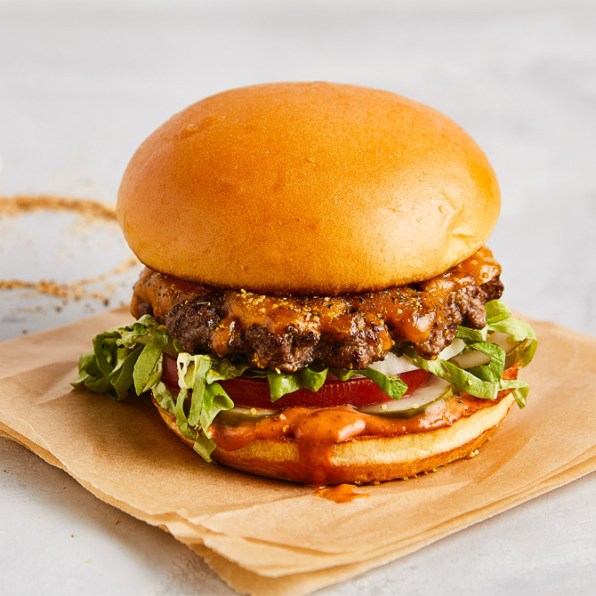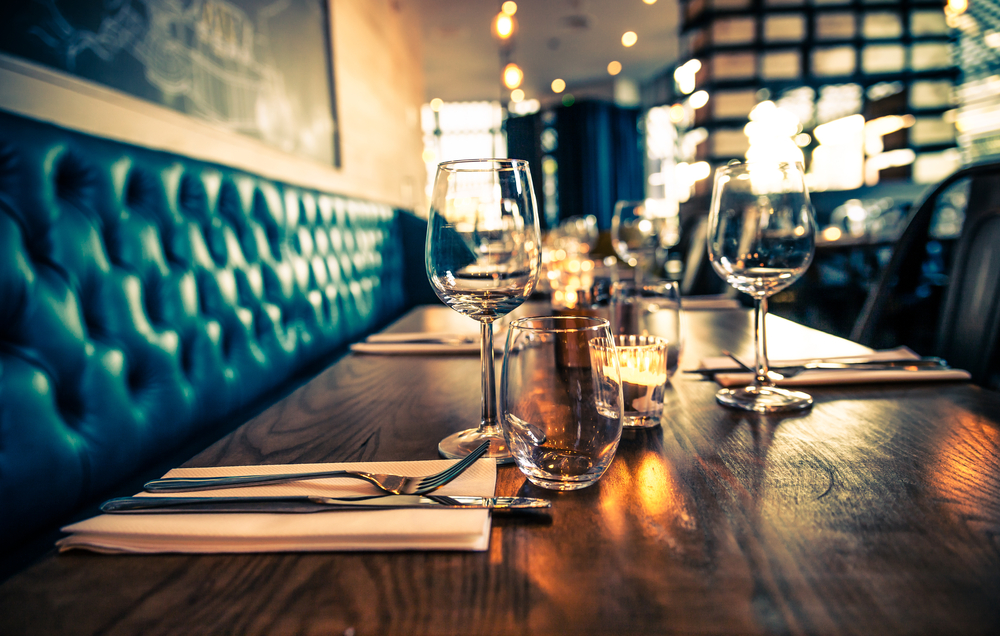Creator, a new restaurant in San Francisco, is home to the world’s first entirely robot-made burger. It costs $6–and it’s actually really good.
Through a glass case in a new restaurant in San Francisco, I’m watching the chef make lunch. That chef is a Rube Goldberg-like machine, slicing buns, adding condiments, grilling meat, and spitting out a fully prepared hamburger–all without any human intervention. A row of brioche buns moves to the right, dropping one bun down a slot where a tiny saw slices it in half. The machine adds a little clarified butter, toasts the bun, and drops it in a box on a conveyor belt, where the machine squirts a precise amount of each sauce for the order, slices tomatoes and onions in real time, grates cheese, and grinds beef to order before cooking the patty. In five minutes, your meal emerges. I’m a vegetarian, but the meat-eating colleague I brought with me declares that the burger is very, very good.

“Growing up, my job was to make hundreds of the same burger over and over,” says Alex Vardakostas, cofounder and CEO of Creator, the new restaurant, which is opening with a soft launch today. “I saw so many opportunities where I wanted to do it a bit better, slower, or more personalized, but it’s impossible when you have to manually make that many burgers with rudimentary tools.”
As a college student, as Vardakostas used sophisticated instruments in a physics program, he began to wonder if similarly advanced tools could be used in restaurants. “We don’t see it as a robot,” Vardakostas. “I see it as the ultimate kitchen instrument. It’s just a utensil. The whole thing started–if a better griddle makes a better burger, let’s go all the way. It just happens that it basically has to be as sophisticated as what some people call a robot.”
Vardakostas and cofounder Steve Frehn spent the last six years working on the machine, despite being told it wasn’t feasible. The startup isn’t the only team to try to use robots to make burgers; Flippy, another robot, can flip patties, though it can’t handle any other step of the process, and when it debuted in March, it struggled to work with humans. Creator’s machine is the first, Vardakostas says, to fully transition any segment of food to automation.Using the machine makes it possible to improve the quality of a burger while keeping costs low; the burgers start at $6 (a Big Mac costs $5.79 in San Francisco), but the robot is so cheap to run that the restaurant can afford higher-quality ingredients, like pasture-raised beef. Rather than using cheap, pre-sliced hamburger buns, it can use fresh rolls with no preservatives. The robot toasts buns for 90 seconds, something that a line cook wouldn’t have the time or patience to do. Slicing tomatoes and onions to order leaves the ingredients crisp, and grating cheese to order helps it melt. The meat can be handled for the best texture. “When the patty’s put into the griddle, it’s so loosely packed it will literally fall apart in your hands, but the robot has the dexterity to keep it all together,” says Vardakostas.
Almost the entire process, apart from grinding and cooking the meat, is visible in the glass case, which was designed to look as un-robot-like as possible. “You see everything, and that’s an important feature of the machine from a physical design perspective,” says Per Selvaag, principle at Montaag, the firm that handled the experience design. “The openness is baked into its physical DNA as much as anything, and your sense leaving the machines is that you trust the process.”
Though humans don’t make the burgers–other than to load the machine with ingredients–the restaurant does still provide jobs. When customers enter, employees greet them, explain the many options for toppings, and help customers order: Because you can adjust all the ingredients with a level of precision you don’t get at a regular burger place (you can even decide whether you want your ketchup on the top or bottom bun), it’s helpful to have someone talk through your options.
Humans also make fries and sides. It’s a better job than the standard fast food gig–pay starts at $16 an hour, employees are encouraged to use 5% of their time to study anything of interest for their future careers (two of the first employees are interested in starting restaurants of their own), and they no longer have to flip burgers over a greasy stove. The self-contained robot also filters out smoke from cooking, so the air is clean. The restaurant doesn’t have the smell of a place where hundreds of burgers have been grilled that day, despite the fact that the two machines in the space can pump out as many as 240 burgers per hour.
“Overall, what we’re doing is reducing the cost of food,” says Vardakostas. “That’s something that’s positive for everybody. When it comes to a discussion of, hey, let’s try to keep people in a position of flipping burgers, I’m kind of incredulous–why the hell are we asking that question? Why aren’t we trying to figure out how to get those people to do something that’s more fulfilling, more human-centered, more creative, and more social?”
The restaurant is launching today with limited hours and online reservations, before shifting to standard hours later in the summer. The founders hope to soon expand outside of San Francisco, with a vision of bringing better options for low-cost food to the type of small towns where they both grew up, which will just require rolling up a machine and adding the ingredients. “We want to democratize access to high-quality food,” says Vardakostas.


![[Photo: Creator/Aubrie Pick]](https://images.fastcompany.net/image/upload/w_562)